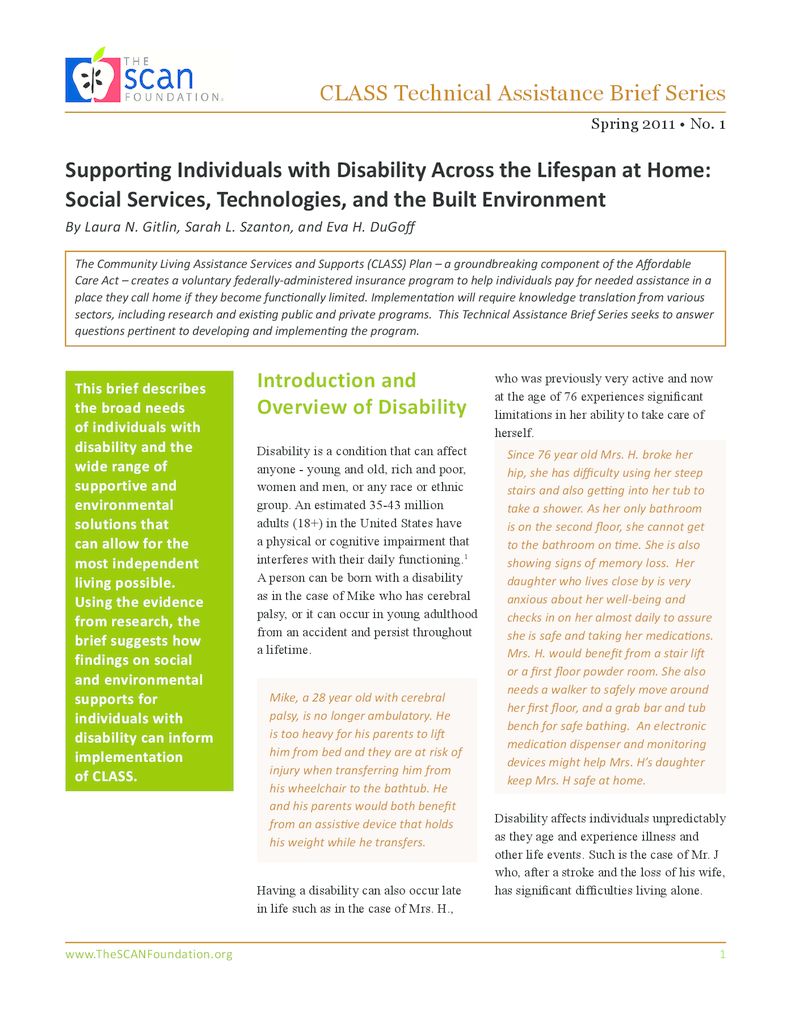Supporting Individuals with Disability Across the Lifespan at Home: Social Services, Technologies, and the Built Environment
summary
This policy brief describes the broad needs of individuals with disability and the wide range of supportive and environmental solutions that can allow for the most independent living possible. It suggests how findings on social and environmental supports for individuals with disability can inform implementation of CLASS.
Date Updated: 04/06/2011Disability is a condition that can affect anyone: young and old, rich and poor, women and men, or any race or ethnic group. An estimated 35-43 million adults (18+) in the United States have a physical or cognitive impairment that interferes with their daily functioning.1 A person can be born with a disability as in the case of Mike who has cerebral palsy, or it can occur in young adulthood from an accident and persist throughout a lifetime…


